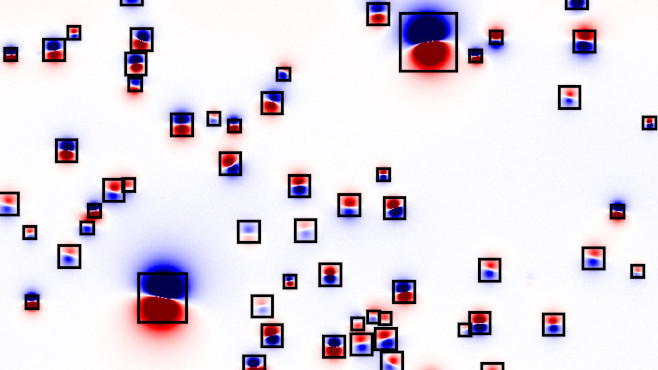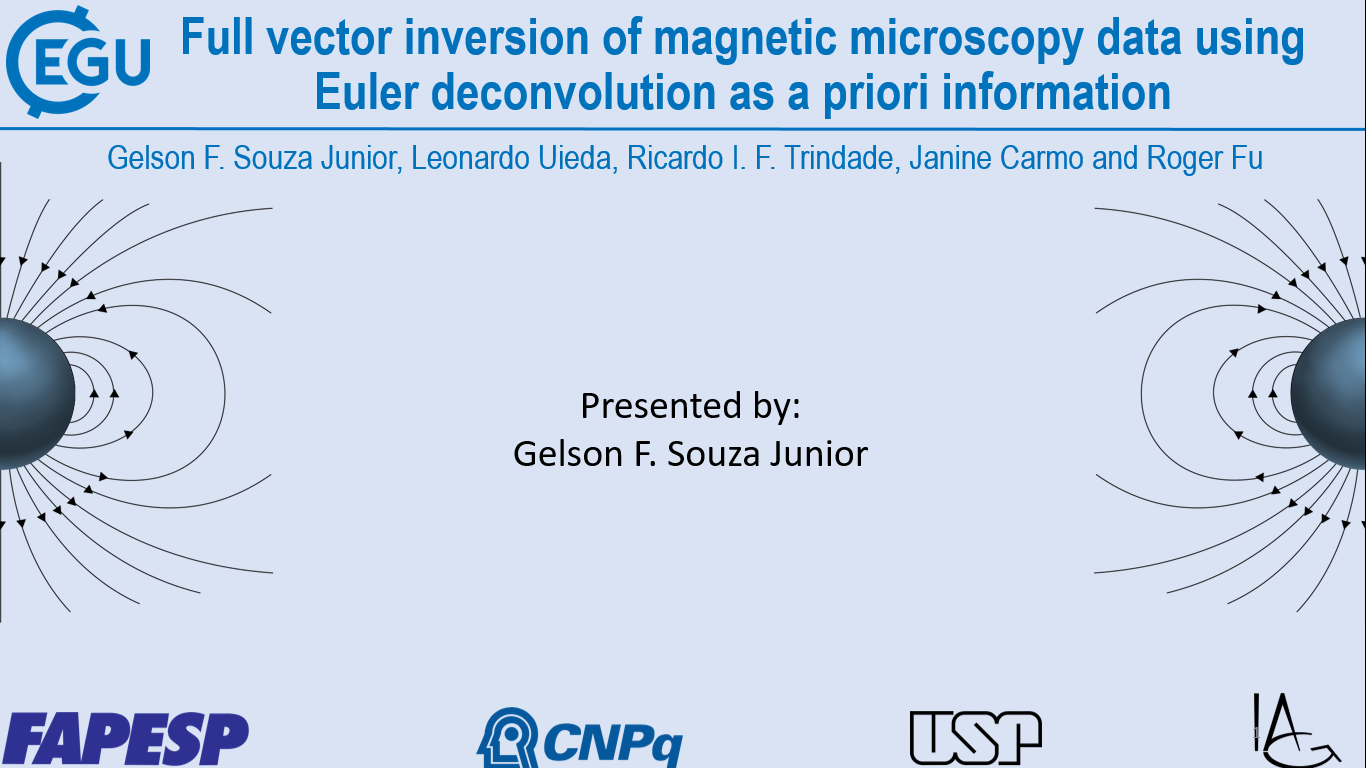Preliminary results of our magnetic microscopy work at #EGU23
2023/04/26
Today, lab member Gelson F. Souza Junior will give a presentation at the EGU 2023 General Assembly about our initial results adapting applied geophysics methods to magnetic microscopy data developed under our Royal Society grant and Gelson’s PhD, which is funded by FAPESP. Here’s a sneak peek of one of the results that Gelson will be presenting:

The talk is today Wednesday 26 April 2023 at 15:05 (Vienna time) in Room -2.21 as part of session EMRP3.1 - Paleomagnetism, micromagnetism and magnetic fabrics: Recent advances and geological applications.

If you’d like to know more, please reach out to Gelson and keep an eye out for our upcoming publication of these results.
Abstract
Classically, paleomagnetic data is obtained from bulk samples, where the signal is obtained from the sum of all magnetic moments within the sample volume. This typically includes stable and unstable remanence carriers. With the advance of microscope imaging techniques (e.g., SQUID microscopes, Quantum Diamond Microscopes) it is now possible to spatially isolate the contribution of single grains or clusters of grains. Yet, despite recent advances in the inversion techniques to derive full vector information from the magnetic microscopy data, there is still no inversion protocol capable of obtaining the magnetization directions of each magnetic particle without using a priori information or physically separating the spatial position of each anomaly. Here we present an algorithm capable of automatically identifying the position of each magnetic anomaly source by combining signal processing and tridimensional Euler deconvolution. Subsequently, we recover both the direction and the intensity of the magnetic moment of each magnetic source with no need for any kind of additional information. The method presented here is a potential technique that may help increase the statistical accuracy of data obtained in paleomagnetic studies from magnetic microscopy data, especially in the case of complex characteristic remanent magnetization.
How to cite: Ferreira de Souza Junior, G., Ivan Ferreira da Trindade, R., Uieda, L., Fu, R., and Araujo do Carmo, J.: Full vector inversion of magnetic microscopy data using Euler deconvolution as a priori information, EGU General Assembly 2023, Vienna, Austria, 24–28 Apr 2023, EGU23-4479, doi:10.5194/egusphere-egu23-4479, 2023.
